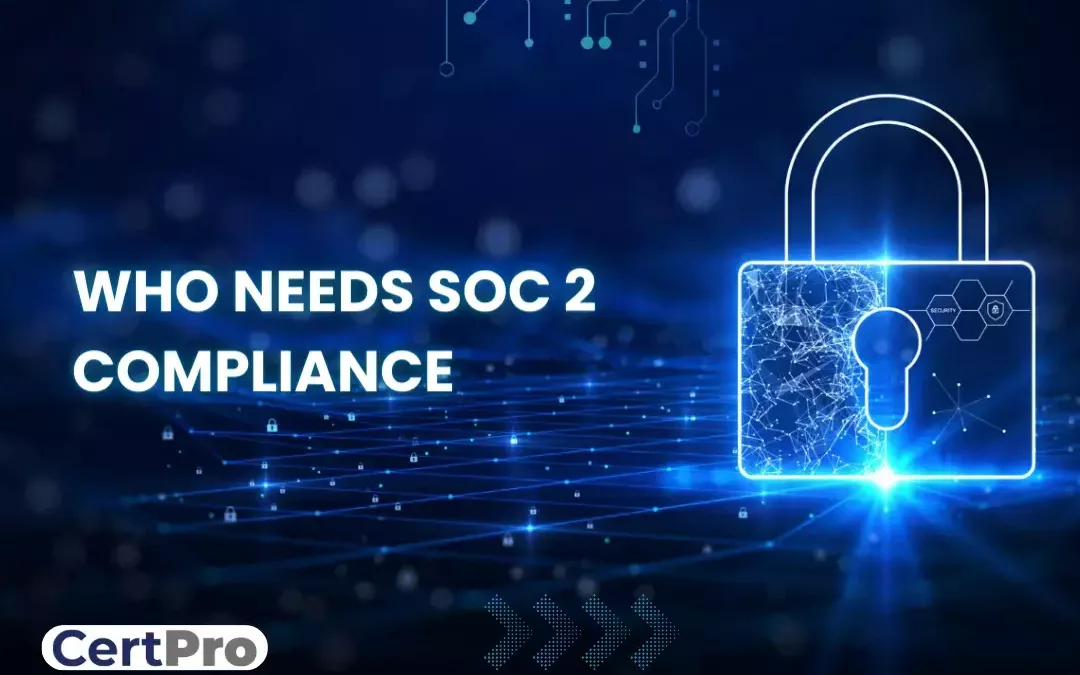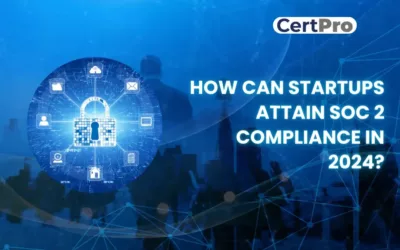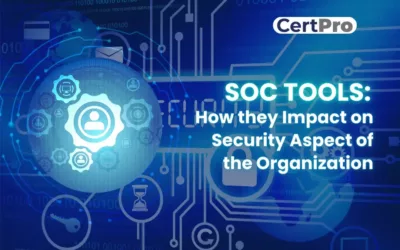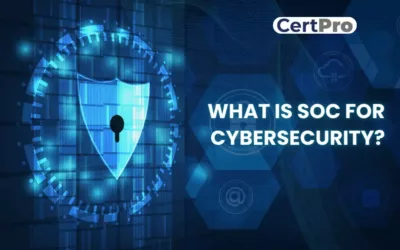The American Institute of Certified Public Accountants (AICPA) created the System and Organization Controls 2 (SOC 2) framework in response to the heightened risk of data breaches.These days, companies that are responsible for protecting customer information have to use SOC 2 as a basic security protocol. Two independent audits are required under the strict information security criteria of the framework, which are based on five Trust Service Principles, in order to evaluate the efficacy of security procedures over time. For those who are wondering “who needs SOC 2 compliance,” companies that handle confidential information are required to use this methodology.
The current environment emphasizes the necessity of SOC 2 accreditation, with a 40% spike in US data breaches in the second quarter of 2021. Sectors such as banking, healthcare, and education who needs SOC 2 compliance, and handle sensitive consumer data must follow SOC 2 requirements. Achieving SOC 2 compliance proves to be a strategic investment, providing financial protection and boosting reputation and customer confidence, despite the initial expenses and time commitments.
Businesses who need SOC 2 compliance gain a competitive advantage by guaranteeing adherence to the most stringent client information security standards. The certification demonstrates strong protection of data processing as well as security against incidents, illegal access, and vulnerabilities. Robust Governance, Risk, and Compliance (GRC) software improves an organization’s overall security posture and expedites audits, which facilitates navigating this complex environment. Companies aiming for information security excellence should consider SOC 2 as a strategic requirement in addition to certification, as it will help them attract and retain customers in the long run.
WHO REQUIRES SOC 2 COMPLIANCE?
SOC 2 accreditation is essential for key organizational roles such as Chief Information Security Officers (CISO), IT management executives, Chief Information Officers (CIO), and leaders involved in cybersecurity, compliance, and risk management within large enterprises that needs SOC 2 compliance. Any business entrusted with managing sensitive consumer data, financial information, or intellectual property in the modern digital landscape should prioritize SOC 2 accreditation.
For those who need SOC 2 compliance, it is crucial since data breaches and cyberattacks are a constant danger. It is required of those in charge of protecting sensitive data to follow SOC 2 guidelines. A thorough understanding of concepts such as EDI, SFTP, MFT, AES, EFS, EFP, HTTPS, FTP, and FTPS is essential in the broad field of cybersecurity. Comprehending risk management compliance terminologies, such as the acronyms for HTTP, GDPR, FISMA, CMMC, HIPAA, and FedRAMP, also enables corporate leaders to efficiently traverse the complex web of compliance rules.
In the digitally-driven corporate ecosystem, SOC 2 compliant plays a crucial role in bolstering the security and reliability of sensitive data for enterprises striving to maintain a safe operating environment who need SOC 2 compliance.
WHAT ARE THE SOC 2 COMPLIANCE REQUIREMENTS?
SOC 2, or Service Organization Control 2, is a data management and security framework that has become critical in today’s digital economy. The unique approach of SOC 2 distinguishes it from other compliance standards. SOC 2 uses a risk-based technique as opposed to previous standards, which provided a particular checklist of controls to execute. This means that, rather than demanding specific technological measures, SOC 2 focuses on identifying and addressing business problems and larger information security circumstances.
1. Risk-Based Approach: SOC 2 does not give a specified set of controls; rather, it emphasizes the significance of understanding and resolving information security risks. Organizations must undertake risk assessments and effectively manage hazards associated with the use of information technology and access to confidential data.
2. Broad Criteria: Instead of providing detailed instructions, SOC 2 outlines broad criteria that businesses must meet in order to demonstrate compliance. It may, for example, address fraud risks by investigating threats and vulnerabilities associated with the usage of information technology and access to sensitive information.
3. Customizable Controls: Organizations benefit from flexibility in designing and implementing controls tailored to their specific requirements and business activities, thanks to the broad scope of SOC 2 criteria. Because of this flexibility, businesses are able to implement security procedures and controls that are both effective and consistent with the unique aspects of their business.
4. Security Controls Development: Organizations are tasked with developing security procedures and controls that meet their unique operational requirements as they work toward SOC 2 compliance. This calls for a calculated approach to address hazards that have been identified, put safety precautions in place, and set up processes to ensure ongoing compliance.
5. Satisfying Criteria: Satisfying the requirements and proving that an organization has put in place efficient measures to safeguard and secure sensitive data is the ultimate aim of SOC 2 accreditation. Meeting the overall goals is the main goal of compliance efforts, as opposed to rigorously following a predetermined set of guidelines.
SOC 2 compliance is remarkable for being flexible and risk-based. Organizations are encouraged to comprehend the particular difficulties they encounter, which enables them to create tailored solutions that satisfy information security regulations and complement their operational procedures.
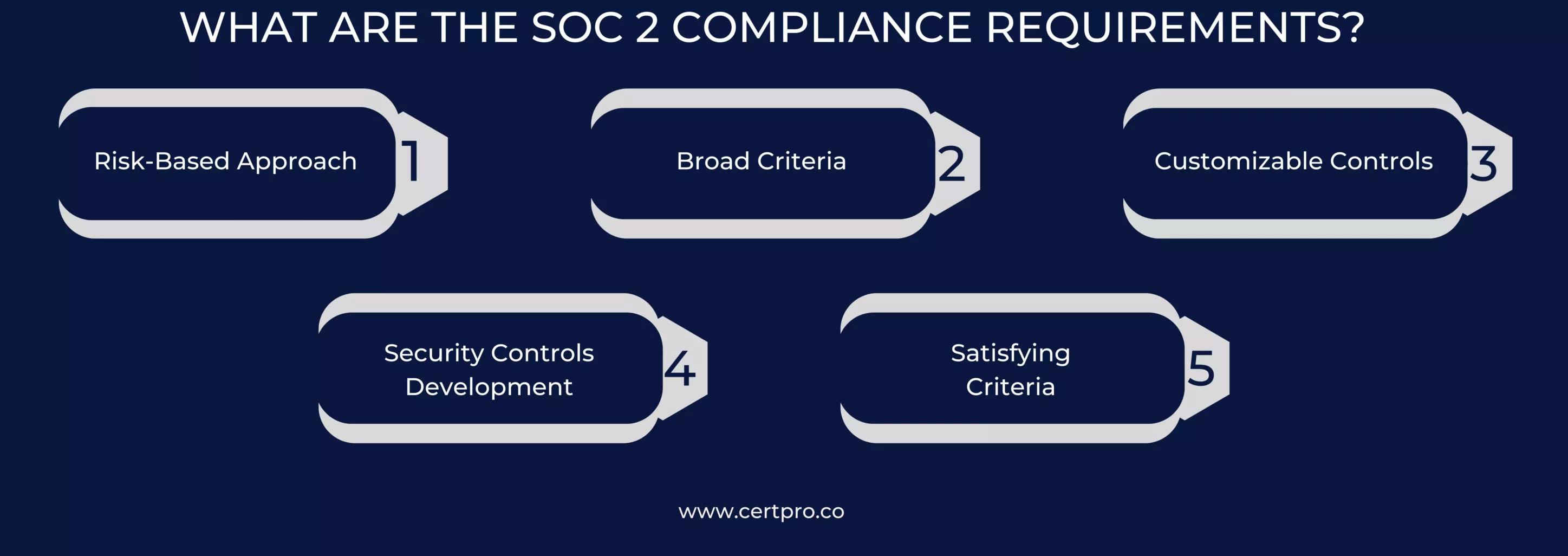
WHAT IS THE SIGNIFICANCE OF SOC 2 COMPLIANCE?
SOC 2 compliance is a vital effort since firms must ensure the security and privacy of their data, meeting the necessary SOC 2 compliance requirements. By following SOC 2 standards, businesses may demonstrate their steadfast commitment to data security and privacy. Obtaining SOC 2 accreditation is not just a legal obligation; it is also an early precautionary step to avoid penalties and other legal risks related to SOC 2 compliance requirements. Consumers and partners find resonance in this pledge, which increases confidence in the company’s dedication to protecting sensitive data.
SOC 2 compliance also turns into an essential factor in maintaining the business’s reputation and meeting SOC 2 compliance requirements. In addition to reducing risks, the procedure improves the organization’s reputation and strengthens stakeholders’ perceptions of its dependability and integrity. SOC 2 compliance is essentially a strategic investment that goes above and beyond regulatory compliance, making a major contribution to the creation and upkeep of a safe and reliable organizational environment.
SOC 2 COMPLIANCE STANDARDS
The AICPA created SOC 2 compliance requirements, which guarantee the security, availability, processing integrity, confidentiality, and privacy of data handled by service providers. SOC 2, which is especially important for cloud and internet organizations, uses independent audits to evaluate compliance with standards and give stakeholders confidence in the efficacy of controls. Building trust in an organization’s security procedures and compliance demonstrates its commitment to data protection.
1. Encompassed Standards: SOC 2 accreditation standards encompass a wide range of requirements, such as security protocols, guaranteeing systems, availability when required, preserving the privacy of sensitive data, assuring data processing integrity, and protecting user privacy. Together, these standards provide a strong foundation for evaluating and guaranteeing the efficacy of controls within an organization.
2. Voluntary Nature: SOC 2 compliant is not required, but many organizations—especially those that offer cloud services—discover that their clients need it. This is so that service providers’ security and privacy policies have a concrete, acknowledged standard thanks to SOC 2 compliant.
3. Customer Demand: Customers often request SOC 2 accreditation as a means to alleviate liability concerns. Organizations that follow these guidelines show their dedication to upholding strong security and privacy standards, giving clients peace of mind about the security of their sensitive data.
4. Audit Frequency: Annual audits are necessary for organizations to maintain their SOC 2 accreditation status. These audits, carried out by impartial third parties, assess if the organization’s policies and practices are in line with the goals of SOC 2. Because these audits are yearly in nature, an organization’s commitment to following these strict requirements is continuously examined and validated.
IMPORTANT COMPONENTS OF THE SOC FRAMEWORK
The AICPA’s SOC framework goes beyond SOC 2 accreditation, covering three primary forms, each focused on certain purposes, measurements, and audiences:
1. SOC 1: Is known as “SOC for Service Organizations: Internal Control over Financial Reporting (ICFR),” and it is responsible for overseeing specific service organizations. It defines the precise procedures that will be measured in accordance with AICPA’s AT-C Section 320. This standard requires a thorough evaluation of internal controls related to financial reporting within the defined service companies, establishing a framework for scrupulous compliance and responsibility.
2. SOC 2: Also referred to as “SOC for Service Organizations: Trust Services Criteria,” shares a target audience with SOC 1 but has broader applicability across a range of industries. The procedures that define SOC 2 are described in TSP Section 100 of the AICPA. With a focus on trust service criteria, this standard guarantees a thorough assessment of service organizations and expands its application to a wider range of industries.
3. SOC 3: Also known as “SOC for Service Organizations: Trust Services Criteria for General Use Report,” is a reduced version of SOC 2. It is intended for a broader audience. The key distinction is that SOC 2 is designed to interact with specialized readers, whereas SOC 3 is designed to connect with a wider, public audience. This distinction guarantees that trust service requirements are accessible and transparent to a broader range of stakeholders.
The uniqueness of SOC 1 contrasts with the broader scope of service organizations provided by SOC 2 and SOC 3. The main distinction is in reporting: SOC 2 is intended for specialized readers, whereas SOC 3 is intended for a broad, general readership. This disparity reflects differing communication techniques, with SOC 2 fulfilling the demands of specialized stakeholders and SOC 3 offering transparent information to the broader public.
FAQ
What is the significance of SOC 2 accreditation for businesses handling sensitive data?
SOC 2 accreditation is vital for businesses managing sensitive data, showcasing a commitment to security and privacy. It fulfills legal obligations, prevents penalties, and enhances reputation, fostering confidence among stakeholders.
How does SOC 2 compliance contribute to an organization's overall security posture?
SOC 2 compliance enhances an organization’s security posture by tailoring security procedures to operational needs. The process involves addressing hazards, implementing precautions, and establishing ongoing compliance processes for a robust defense system and secure data environment.
What are the SOC 2 accreditation requirements, and how does the risk-based approach differentiate it from other standards?
SOC 2 adopts a risk-based approach, differing from previous standards with specific checklists. Its compliance requirements offer flexibility, allowing organizations to tailor controls to their needs, emphasizing risk assessments and effective management of information security risks.
Why do customers often request SOC 2 accreditation from service providers, especially those offering cloud services?
Customers request SOC 2 accreditation to ease liability concerns. Adhering to SOC 2 signals a commitment to robust security and privacy. For service providers, especially in cloud services, it establishes a recognized standard for policies.
How often should organizations undergo SOC 2 certification?
Organizations undergo yearly SOC 2 analysis to maintain compliance with the Trust Services Criteria, with audit results valid for one year. The duration of the certification process varies (5 weeks to several months) based on factors like audit type and organizational readiness.

About the Author
NICOLENE KRUGER
Nicolene Kruger, Regional Manager in South Africa, is an experienced Legal Counsel with expertise in compliance and auditing. Her strategic, solution-driven approach aligns legal standards with business objectives, ensuring seamless adherence to regulations.
HOW CAN STARTUPS ATTAIN SOC 2 COMPLIANCE IN 2024?
Trust is crucial for startups to do well in today's digital world. It's vital for establishing credibility with clients, especially in a data-driven environment where privacy is the main component. Therefore, getting a SOC 2 compliance report is crucial to building...
SOC TOOLS: How They Impact On Security Aspect Of The Organization
The changing cybersecurity landscape increases the importance of Security Operations Center (SOC) tools. Hence, it is essential for strengthening digital defenses and protecting against cyberattacks. SOC tools help security teams detect, monitor, and prevent security...
WHAT IS SOC FOR CYBERSECURITY?
In today's fast-paced digital landscape, ensuring robust cybersecurity measures is imperative for organizations aiming to protect sensitive data and maintain stakeholder trust. The American Institute of CPAs (AICPA) crafted the SOC for cybersecurity reporting...

